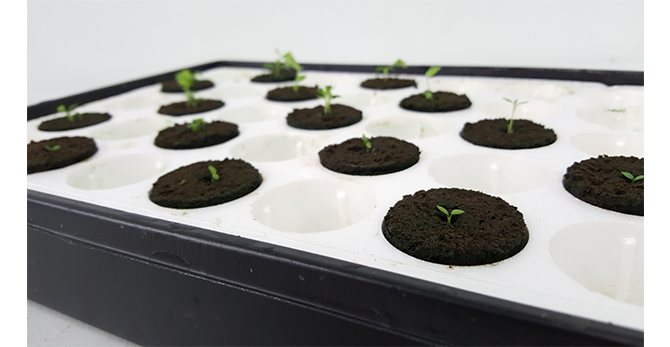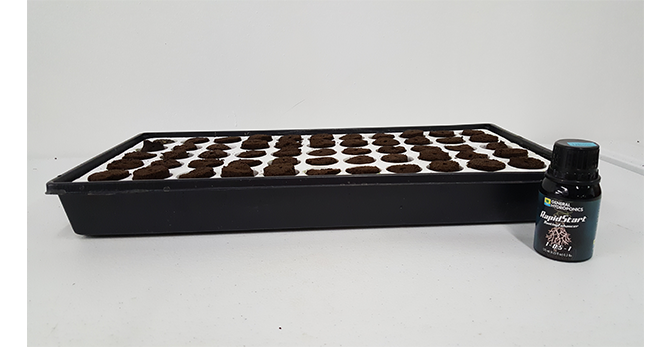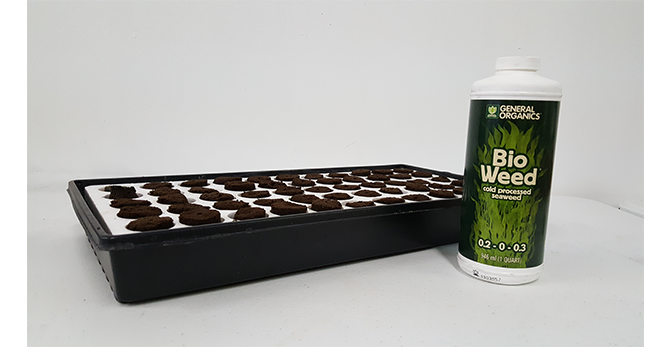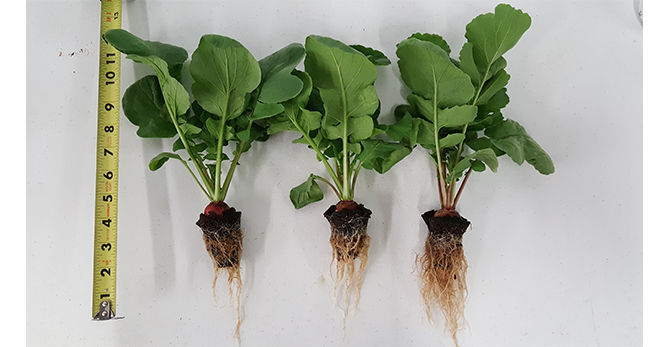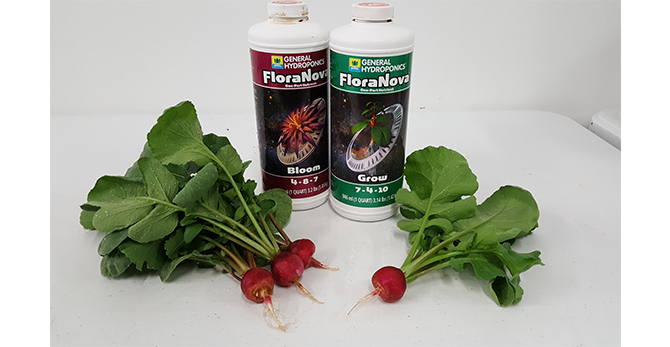How to Grow Radishes Indoors with Hydroponics
Here’s a question for you trivia buffs out there. Every year on January 7th, this edible root is part of the Japanese Festival of Seven Herbs, believed to ward off evil spirits and promote good health throughout the coming year. In Mexico it is a beloved part of Christmas festivities when carved into figures like jack-o-lanterns and in China, the greens of this tasty vegetable are used medicinally. Any guesses? Why yes! It’s the humble radish, a zesty addition to salads, Asian cuisine, and soups. But did you know that it’s an excellent plant for growing hydroponically?
That’s Radish-ulous!
Radishes are among the easiest vegetables to start from seed, both in soil and hydroponics. Often ready to harvest in as little as a month, you’ll have flexibility with your system, cycling through multiple crops a year. This cool season vegetable grows best between 50-70° F. They like even moisture, so hot, dry conditions will cause them to bolt (flower) which can reduce the quality and size of your radish root.
When propagating, you should see seedlings in 3 to 7 days. Cull the weaker sprouts. After transplanting into your hydroponic system, the round radish root should grow on the surface of the media.
In most hydroponic systems, water soluble fertilizers are dissolved in the reservoir to feed to the plants. Check the pH and electrical conductivity of the nutrient solution at least 2-3 times a week in case it needs tweaking. The ideal pH for growing radishes hydroponically is between 6.0 and 7.0. Radishes benefit from phosphorus to improve color and flavor, so in the case of multi-step fertilizers, be sure not to skip the “Bloom” step as they are typically higher in phosphorus.
Beginner
| Stuff You’ll Need | |
| Radish Seeds | Water Soluble Fertilizer |
| Super Sprouter Root Raft |
The Root Raft is a seed and cutting starter, but it can also be used to fully mature radishes. This system is perfect for smaller varieties that can be grown close together. It’s as simple to use as putting a few seeds in each cell and filling the tray with water. For larger varieties, simply leave a 1 cell empty between each radish sprout. After you’ve set the raft down in the tray, the seed cell will start to draw the water and fertilizer up, feeding the seeds and keeping them perfectly moist. Due to the volume of water it can hold, the tray will need filling less often than other similar plug trays. As they grow, watch the radishes grow up on top of the raft. Harvest when it has reached the desired size. The root raft can also be re-used by replacing the plugs for a new batch.
Intermediate
| Stuff You’ll Need | |
| 4x4 ft. Flood Tray | Submersible Water Pump >=200 gl/hr |
| 4x4 ft. Flood Tray Stand | Reservoir >=30 gallon |
| 2 (½”) Rubber Grommets | ½” PVC Pipe |
| 1 (½”) Straight Connector Fittings | Perlite (Rinsed) |
| ½” Rubber Tubing | 1 Plug-In 7 day Timer |
Place flood tray in tray stand. Drill a ½” hole in the lowest spot of the flood tray and insert the grommet. Put a ½” straight connector through the bottom of the grommet so that it extends up into the flood tray. Connect the ½” tubing to the pump so that it will pump the water into the flood tray through the connector. The pump should sit soundly on the bottom of the reservoir. Drill a second hole in the flood tray and insert grommet. Insert the pipe through the grommet so one end extends below the water line in the reservoir and the other is at the maximum fill height you desire (which should be high enough to reach the roots but not flood the stems). This will help prevent overflow. Add your fertilizer to the reservoir.
Once the seedlings are about 1-1.5” in height, fill the flood tray with perlite at least 2 to 3 inches deep (or more for larger varieties). Place 1 plug/seedling about 2-3 inches apart for small radishes and up to 6-8 inches apart for larger varieties.
Set the pump to flood the tray 4-10 times throughout the light cycle using the timer. Your pump should be set to turn off as soon as the water reaches the max fill height and starts to drain into the pipe. As the radishes grow larger, it may need more flood cycles per day.
Let Your Ideas Take “Root”
Radishes are a quick and easy crop, perfect for culinary enthusiasts and kids alike. If you like growing at home, then the radish is for you. Want a little more variety? Use the Intermediate setup for carrots, beets, and turnips too! Don’t forget that our helpful hydroponic experts are available to assist you in your next project.
So, which radish is the most radical? Let us know your favorite varieties, grow techniques, and recipe ideas on Facebook, Twitter, LinkedIn, or Pinterest!
Sources



